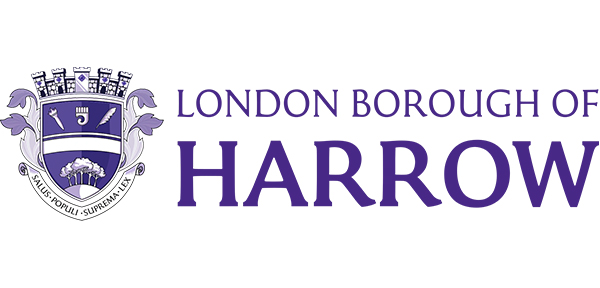Reducing costs in a 3D digital borough
The London Borough of Harrow has begun a journey to create a fully-interactive, three-dimensional digital model of the borough, while minimising development costs. Already, this emergent digital twin has delivered thousands of pounds in cost savings, facilitated more productive working practices and is starting to transform the public consultation process for new planning applications.
3D, interactive, digital views of Harrow, created for public and internal use in ArcGIS Online and ArcGIS Enterprise
High-resolution, aerial imagery, captured with a low-cost drone, processed using SiteScan for ArcGIS
BIM models easily integrated into urban models using out-of-the-box functionality in ArcGIS Online Scene Viewer
The Challenge
The Digital Services Team at the London Borough of Harrow aspired to create a 3D interactive, digital model of the whole borough, covering everything from parks and historic buildings to modern developments. It was convinced that this digital twin would have the potential to deliver significant, long term financial benefits for the council, as well as improve citizen engagement in the planning process. However, like all public sector organisations, it had a limited budget, so needed to find a way to deliver its vision using its existing technology, low cost resources and affordable data assets.
“ArcGIS enables us to drop 3D plans for new buildings into a 3D world and show how they fit into the existing environment.”
Sam Tizzard, GIS and Data Manager, London Borough of Harrow
The Solution
The council already had licenses to use Esri’s geographic information system (GIS) technology, so decided to build its 3D digital twin using Esri’s ArcGIS system. After seeking advice from Esri UK, the Digital Services Team discovered that it could access an ‘interim’ low-resolution mesh model, created solely from 5cm aerial images, from one of Esri UK’s partners, Bluesky. It therefore began by creating a baseline 3D model of Harrow in ArcGIS using this high-resolution imagery to create a low resolution mesh of the borough, which was more cost effective than using LiDAR data.
Next, the council purchased a lightweight, entry-level drone for just £1,000 and began to capture high-resolution aerial imagery of key buildings and facilities across the borough where images with greater magnification were specifically needed. It developed a standardised, well documented and repeatable approach to using the drone safely, using Esri’s ArcGIS Survey123 form-building app.
It then used SiteScan for ArcGIS, Esri’s cloud-based drone mapping solution, to process the drone imagery and create 3D models for public viewing in ArcGIS Online and for internal use in ArcGIS Enterprise. In the initial pilot, the council used the drone to model three buildings and two public parks, and there are now requests to model 380 further sites across the borough. The imagery captured through this process is incredibly detailed, enabling people to zoom in to see the condition of individual slates and gutters on rooves.
The council has also started integrating BIM (building information modelling) drawings into its 3D model of the borough, using out-of-the-box functionality in ArcGIS Pro and ArcGIS Online Scene Viewer. For example, citizens can view a proposed development in Milton Road and better understand how this modern building will look, next to a traditional terrace of homes and shops. As Sam Tizzard, the council’s GIS and Data Manager, explains, “ArcGIS enables us to drop 3D plans for new buildings into a 3D world and show how they fit into the existing environment.”
In another confident step towards the creation of a comprehensive 3D digital twin of Harrow, the council has begun to combine its high-resolution drone imagery, low-resolution digital terrain models, BIM data and street view images, all in one place, in ArcGIS Enterprise. It is achieving this using the ArcGIS Maps software developer kit (SDK) for JavaScript and plans to further develop this app with support from Esri UK’s Professional Services team.
“The potential for cost savings through roof inspections alone is huge.”
Sam Tizzard, GIS and Data Manager, London Borough of Harrow
Benefits
Reduced costs in building maintenance
Although it is still early days, the new 3D digital model of Harrow is already delivering significant cost savings for the council. For instance, the council was able to view the drone-captured imagery of Headstone Manor in ArcGIS Enterprise to inspect the condition of the roof. ArcGIS removed the need for a planned on-site inspection and saved the council £9,000 in scaffolding and labour costs. “We estimate that a similar roof inspection of the leisure centre would cost in the region of £20,000, so the potential for ongoing cost savings through roof inspections alone is huge,” Tizzard notes.
Improved citizen engagement in planning process
Harrow Council now has the ability to show citizens 3D models of proposed new planning developments in a 3D context, for the first time. This will improve citizen engagement in the planning process and reassure residents about the impacts of new developments. “ArcGIS is enabling us to be more transparent with citizens,” says Tizzard. “We can help people visualise planning applications and better understand how their neighbourhoods are improving.”
Substantial time savings for council staff
Council staff, such as the highways team, can view the borough from their desks and reduce the number of on-site visits required. For example, streetview imagery, integrated with ArcGIS Enterprise, currently receives around 3,000 hits per month. The Digital Services Team estaimates that if one in three of these hits would have been a site visit, the saving could be the equivalent of 6 people’s job roles, ensuring people’s time is better spent on other tasks.
Greater awareness of greenspaces and public amenities
The Digital Services Team believes that there will be many and varied benefits of the 3D borough model over time, because it is so versatile. For example, as the model includes high-resolution 3D views of parks and public facilities like leisure centres and arts venues, it could be used to raise awareness of local open spaces and their amenities. Tizzard observes that “The council could use ArcGIS to show off its Green Flag parks and open spaces to encourage people to use them as part of the ‘Healthier Harrow’ campaign.”



